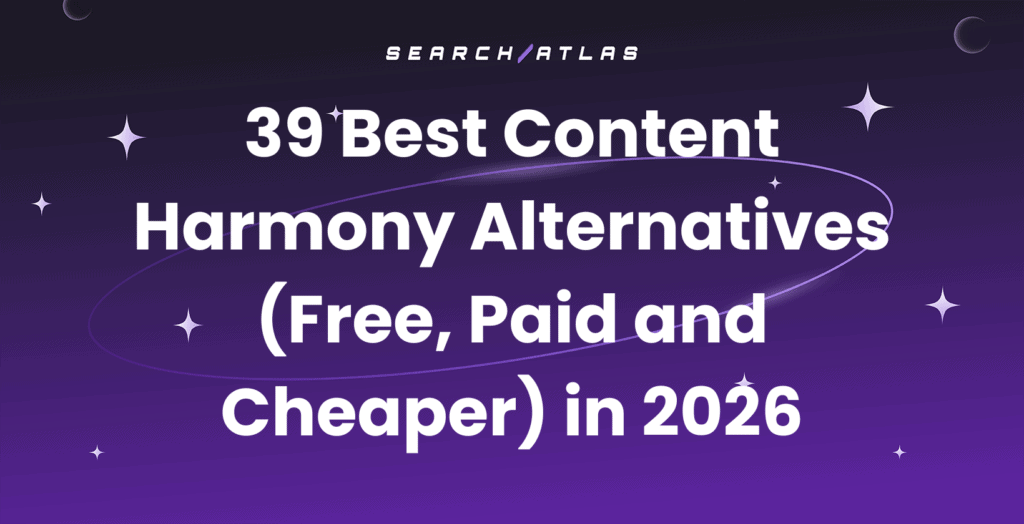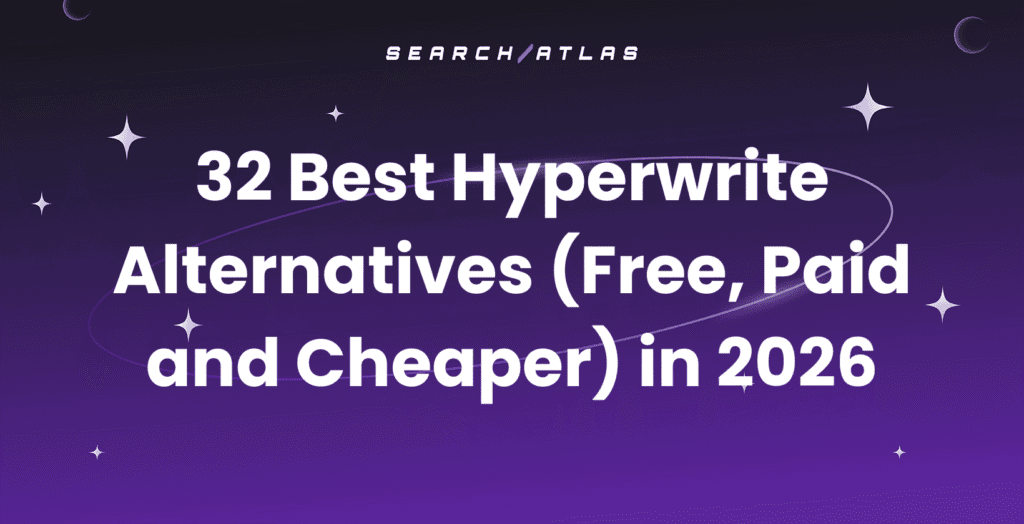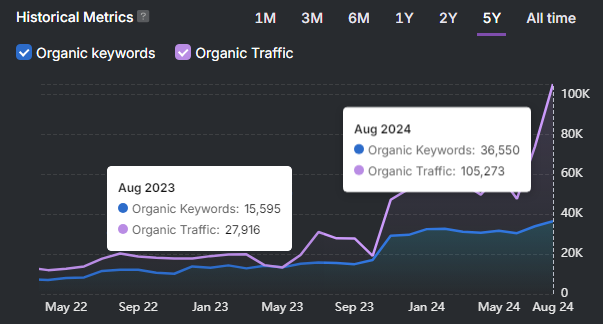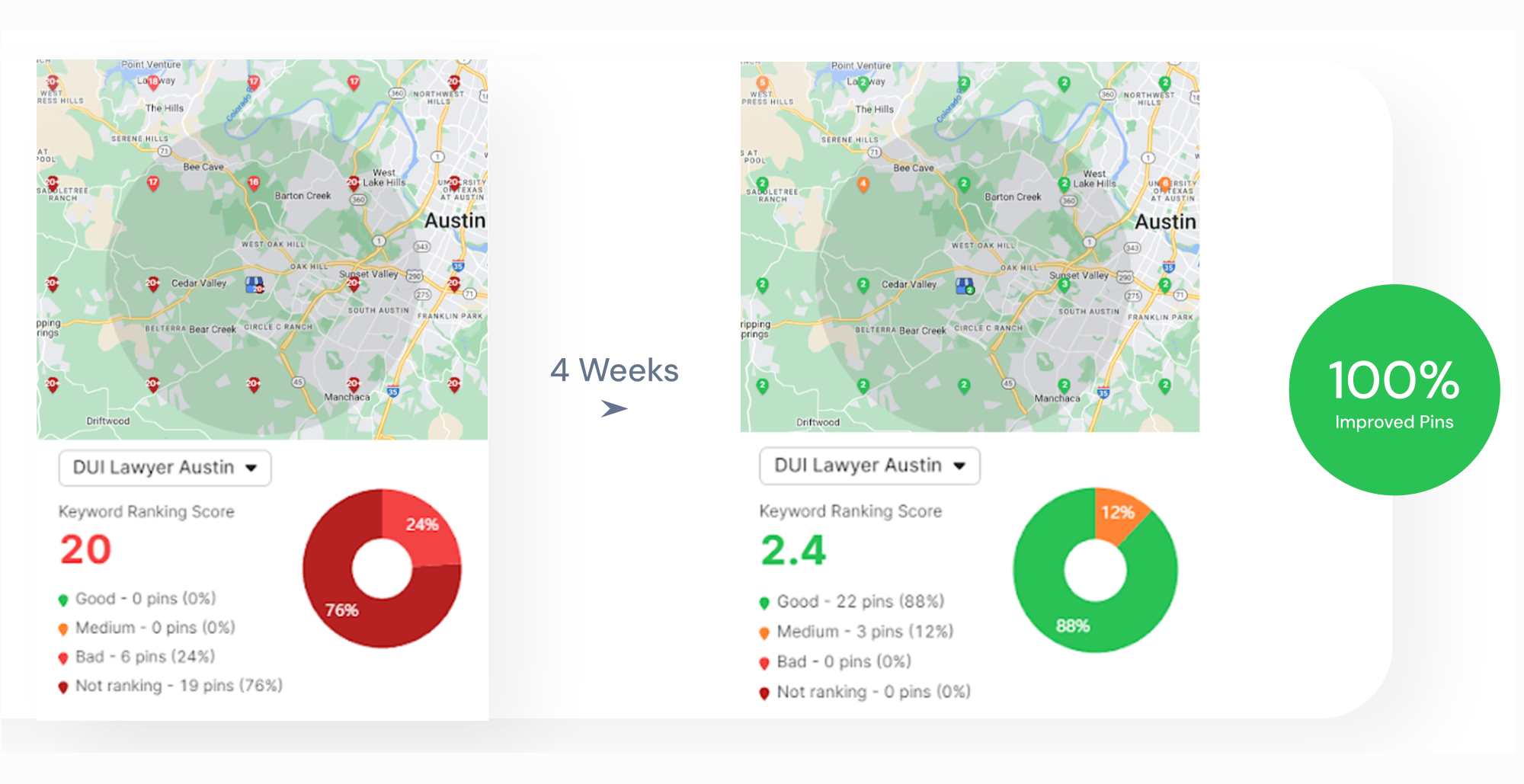Ever read something and thought, Did a human actually write this? 🤨
With AI-generated content flooding the internet, learning how to detect AI content is more useful than ever. It’s like spotting a deepfake, you might not always be 100% sure, but certain clues give it away.
No detection method is foolproof (if you’ve ever tested AI content against tools like ZeroGPT, you know this).
But what’s the best way to identify AI writing? A mix of AI detection tools and human intuition.
We’ve put together the 10 easiest ways to instantly spot AI content. And later, we’ll let you in on our secret for AI content optimization that doesn’t get caught! 🕵️
Stay tuned!
What is AI Content?
AI content refers to text, images, or videos created by artificial intelligence instead of a human.
From blog posts to viral videos, AI-generated content is everywhere. While AI can be a powerful assistant, it still needs a human touch to ensure quality, accuracy, and originality.

What is AI Content Detection?
AI content detection is the process of figuring out whether text was written by a human or generated by AI.
While AI detection tools exist, they’re far from perfect… They often miss AI content creation or mistakenly flag human writing as AI.
That’s why relying on them alone isn’t enough. To spot AI-generated text yourself, you need to know the key signs, like repetitive phrasing, lack of real insight, or a robotic tone. 🤖
10 Red Flags to Help You Detect AI Content
We’re going to share a list of methods that will help you instantly spot AI-written content without relying on tools, as they often miss the mark.
Later, we’ll also reveal how to create AI content that avoids all these red flags. 🚩
1. Repetitive or Unusual Patterns
AI tends to rely on patterns when writing, so if you train it well enough, it can produce drafts that better match your tone and style.
Here are a few examples to watch for:
- Overuse of emojis in social media posts 🚀
- Starting long-form content with phrases like “In the era of [subject]”
- Excessive alliteration to make the text sound more appealing
A major red flag for AI SEO writing is the overuse of certain words, like:
- Crucial
- Dive
- Tapestry
- Furthermore
- Consequently
AI writing also tends to be overly flowery and repetitive. For example, take a look at this AI-generated description:
“Held within are not only headphones but an invitation to step into a new realm of audio excellence…”
While it sounds polished, it’s overly dramatic and repeats ideas in different ways. Human writers, on the other hand, would convey the same message more concisely without the redundancy.
2. Odd Idioms and Slang Usage
We all use idioms and slang naturally in everyday conversation without even thinking about it. But when AI like ChatGPT tries to mimic our language, it often gets those phrases wrong or uses them awkwardly.
For example, you might see an idiom that should be familiar, but it feels out of place, like when someone tries to use local slang but doesn’t quite nail it.
Some other idioms and slang ChatGPT overuses or misuses include:
- “It’s important to note…”
- “Dive into…”
- “Delving into the intricacies of…”
- “In conclusion…”
- “In summary…”
- “It’s worth noting that…”
- “Important to consider…”
- “Based on the information provided…”
- “Embark…”
- “Unlock the secrets…”
- “Unveil the secrets…”
- “Elevate…”
- “Unleash…”
- “Harness…”
- “Mastering…”
- “Revolutionize…”
- “Enhance…”
When you see an idiom that doesn’t quite fit, it’s usually a sign that the text was generated by AI.
3. Missing Human Experience and Insight
Writing is shaped by our opinions, emotions, and personal experiences.
AI, however, doesn’t have its own life experiences, so while it can give you the facts, it misses the personal touch that makes writing feel real.
Even when you add personal details to the prompt, the AI often turns them into something too vague or bland. That’s why AI tools can’t be a one-click solution for great content creation.
AI also struggles to form genuine emotional connections. It can’t convey empathy or insight the way humans can.
Imagine reading an article about a new hiking trail. If it’s AI-written, it might describe the trail in factual terms, but you wouldn’t feel the writer’s personal connection to the adventure
When you’re checking for AI content, look for a lack of personal stories or emotions. AI tends to rely on general information or paraphrased experiences, which lack depth.
4. Content Plays it Too Safe
AI doesn’t take bold stances or share controversial ideas, at least not yet.
Instead, it often sticks to neutral, well-accepted views, which makes it feel uninspired.
Human writers, especially those with expertise or strong personal beliefs, aren’t afraid to speak their minds. 🗣️
They dive into tough topics, challenge the status quo, and offer unique perspectives. They can back up their views with reasoning and a clear voice, making their arguments more engaging and compelling.
For example, imagine reading an article about the best way to eat breakfast. An AI might offer a generic, safe take, saying, “Breakfast is important for energy.” A human writer, though, could argue, “Skipping breakfast is a personal choice, and here’s why it might be better for some people.”
5. Incorrect or Misleading Information
AI-generated content can spread misinformation because the AI doesn’t fully understand what it’s writing about.
It may “hallucinate” details to fill gaps, leading to incorrect or misleading information.
That’s why it’s crucial to double-check surprising facts against trusted sources like reputable news outlets or academic research.
Here’s an example of AI hallucination, and it can have serious consequences.
ChatGPT created several fictitious court cases and presented them as legal precedents in a brief submitted by Steven A. Schwartz. When the judge tried to verify the cited cases, none of them existed.
As a result, Schwartz, another lawyer, and his law firm were fined $5,000 by the court. 💸
6. Outdated or Irrelevant Information
AI content often relies on outdated data, as its knowledge is only current up until its data cut-off.
For example, ChatGPT’s knowledge only goes up to July 2023, so it won’t have the latest statistics, studies, or news.
To spot this, always check the dates on any studies, statistics, or news references. If they’re old or irrelevant, that’s a red flag.
AI tools don’t typically prioritize the most recent sources and they aren’t updated in real-time.
7. Lack of Originality or Personality in the Text
AI is formal, overly technical, and lacks character or warmth. 🥶
For example, it doesn’t use informal language, slang, or colloquialisms. It also lacks a unique tone of voice, making it sound more robotic and less engaging.
Human writers naturally infuse their work with personality: Whether it’s through humor, casual language, or pop culture references.
A good human writer will keep things interesting and dynamic, rather than sounding stiff or dull.
8. Storytelling Inconsistencies
AI content generators can struggle with creating a clear, coherent narrative.
Their storytelling often lacks a logical flow. The story ends up feeling forced, as if the same idea is repeated in different ways.
It also has trouble picking up on cultural nuances, social cues, or historical contexts that add richness to a story.
To spot this, look for sudden topic shifts or jumps from one subject to another without any smooth transition. Do the conclusions naturally follow the rest of the text? Can you easily follow the flow of the argument?
Human writing tends to have a natural progression and structure that’s easy to understand, while AI writing often feels disjointed.
9. Absence of Natural Humor and Sarcasm
Sarcasm is a tricky form of communication that depends on tone, context, and a deep understanding of social cues.
AI struggles with using and interpreting sarcasm properly. It often ends up with awkward or disjointed sentences.
Even though AI has made strides in natural language processing (NLP), it still has trouble detecting tone, especially when the words don’t match the intended meaning. AI writers often can’t tell the difference between a sarcastic comment and a sincere one.
To spot this in AI content, look for awkward attempts at humor or sarcasm:
- Does the sarcasm fall flat?
- Is the timing off?
- Does it feel forced?
Human writing naturally uses subtle humor that fits the context and feels natural.
10. Mismatch Between Content and User Intent
Search intent or keyword intent is the reason behind a user’s query—what they hope to achieve. There are four main types of search intent:
- Informational Intent: Users are looking for information (e.g., “how to fix a leaky faucet”).
- Navigational Intent: Users want to find a specific website (e.g., “Facebook login”).
- Transactional Intent: Users are ready to make a purchase (e.g., “buy iPhone 14”).
- Commercial Intent: Users are researching before making a purchase (e.g., “best laptop for gaming”).
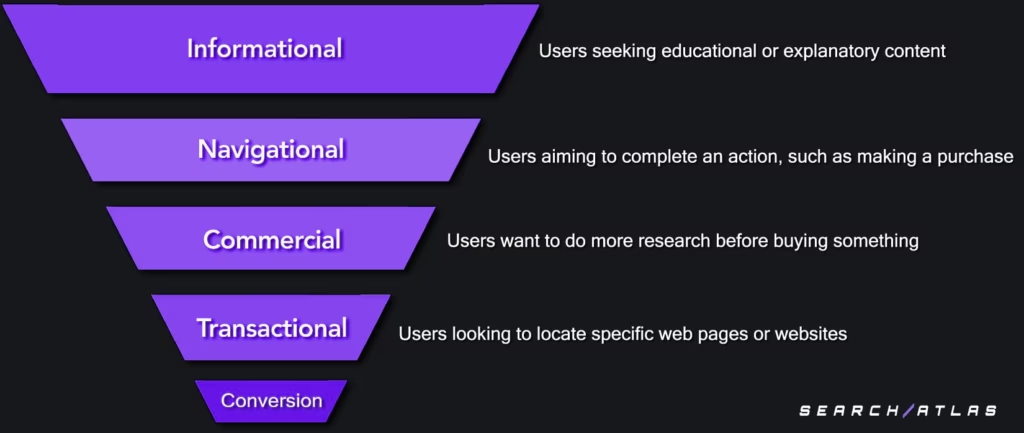
When users search the web, they’re usually looking for specific answers to their questions or problems.
AI writers often struggle to fully grasp the nuances behind search queries. For example, if someone searches for “best cars for families,” they’re likely looking to compare models before buying.
An AI-generated article might offer general car info but miss out on specific comparisons, reviews, or recommendations, which the reader actually wants.
Check if the text truly answers the questions readers are likely to have:
- Does it address the main pain points or provide the detailed answers people expect from the title?
- Or does it leave gaps, forcing the reader to look elsewhere?
The relevance of your content to their query directly affects how well it ranks in search results.
How to Write AI Content That Feels Authentic
These red flags often appear because people use generic AI generators like ChatGPT, Claude, DeepSeek, Gemini, and others.
But it’s entirely possible to create human-like content without these issues using an AI tool that lets you configure settings specifically.
Content Genius, by Search Atlas, is your go-to AI-powered writing assistant that helps you create SEO-friendly, human-like content effortlessly.
Once you’ve picked your keywords, just plug them into Content Genius. The tool analyzes your competition and provides suggestions based on their content outlines, giving you a head start.
From there, you can fine-tune things like tone and style to match your brand’s personality, and even choose between GPT or Claude AI models, depending on your needs.
You can also generate images to go with your text and publish everything in one-click.
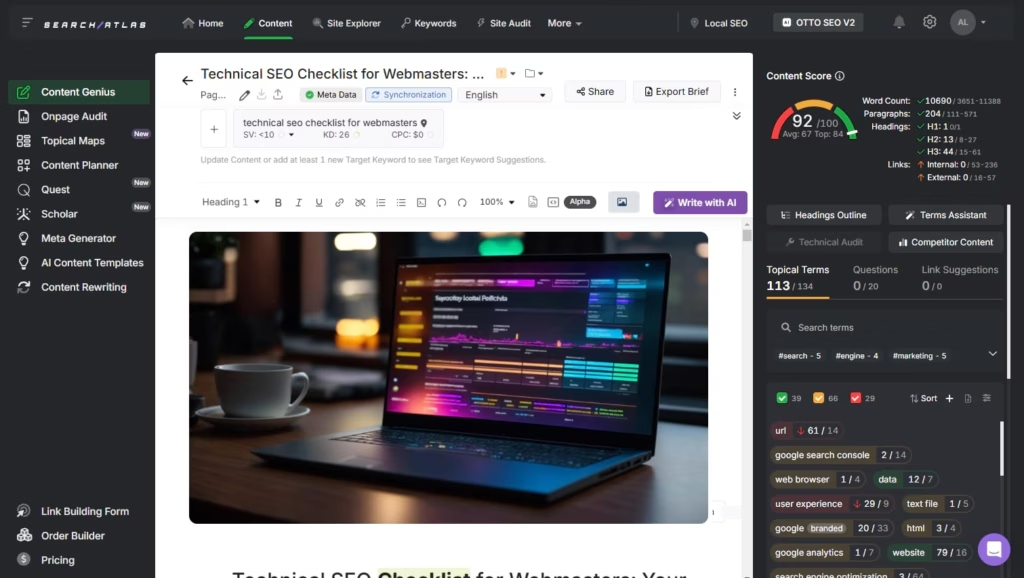
It takes a deep dive into top-ranking pages, giving you useful insights on keywords, subheadings, NLP terms, and Internal links.
All of that makes your SEO content not only connect with readers but also ranks well on search engines.
How to Evaluate Your AI Text for Human Authenticity and Quality
Scholar is an innovative tool designed to provide a comprehensive analysis of your content, or even your competitors’ content.
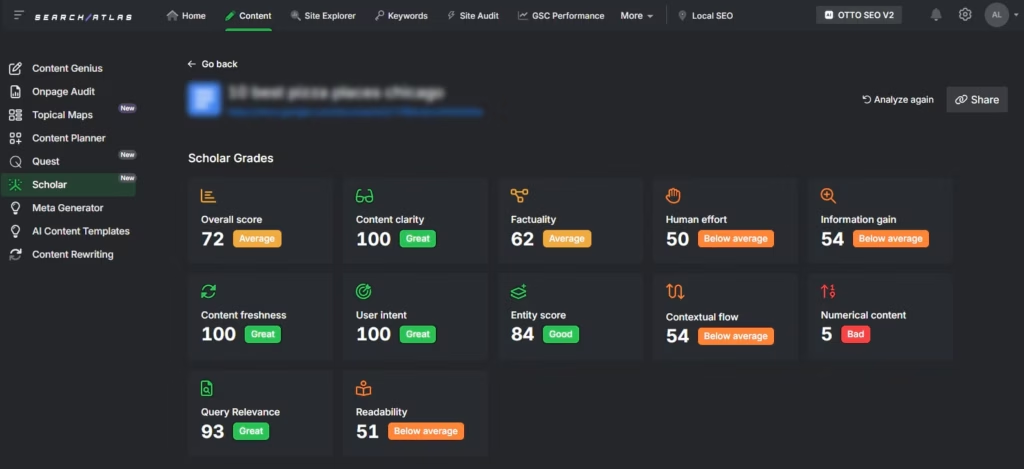
Unlike basic content analyzers, Scholar dives deep into various aspects of your text to help you improve its effectiveness, evaluating your content on a scale from 0 to 100 and highlighting areas that need improvement.
Here’s what Scholar evaluates:
- Content Clarity: Checks if your content is concise, easy to read, and free from unnecessary fluff.
- Factuality: Assesses how accurate and relevant your information is to the user’s query.
- Human Effort: Measures the level of human input beyond just SEO tools.
- Information Gain: Identifies unique insights that aren’t covered by existing search results.
- Content Freshness: Tracks content updates and timestamps to signal its recency.
- User Intent Alignment: Ensures your content aligns with what users expect when they search.
- Entities: Optimizes content by incorporating topics from Google’s Knowledge Graph.
- Contextual Flow: Ensures your content follows a logical, smooth progression.
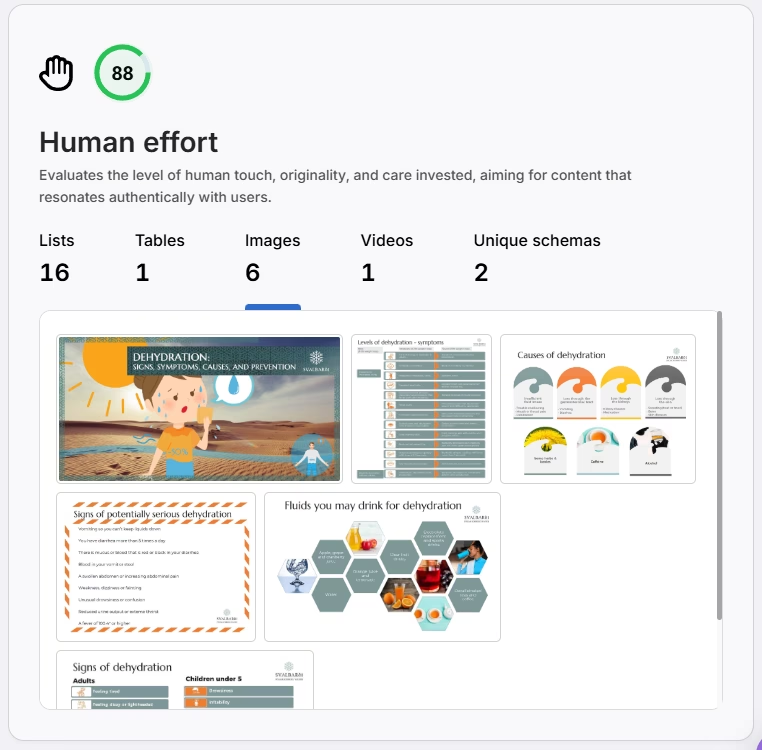
Scholar evaluates these areas to help you identify weaknesses in your content.
For example, if your factuality score is low, you’ll know it’s time to double-check your information, or if clarity is lacking, you can simplify your language.
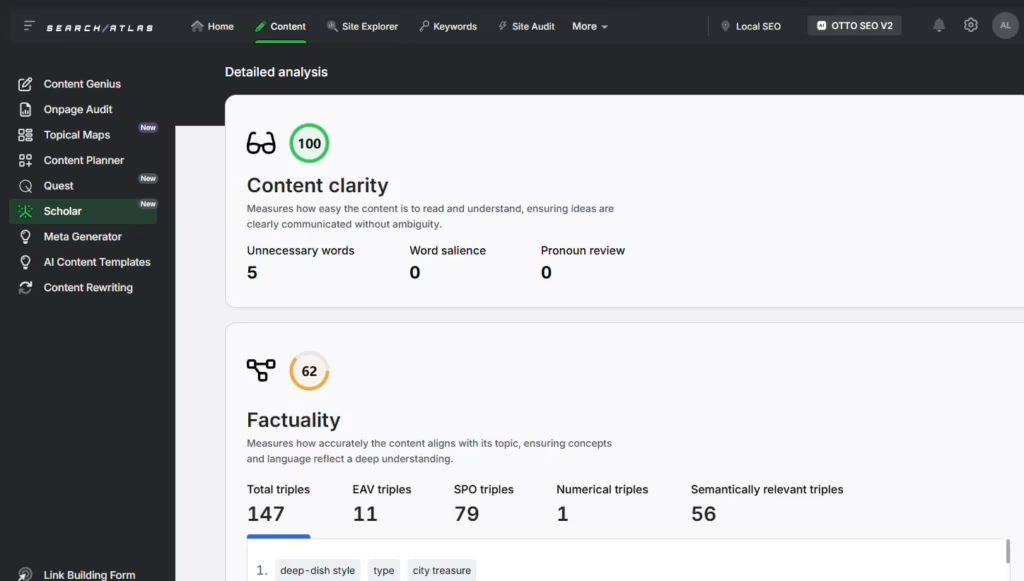
How Scholar Works:
- Link your content.
- Choose your target keyword and landing page.
- Receive a detailed evaluation with actionable insights.
Detect AI Content, Craft Real Human Writing
To wrap it up, the red flags we’ve highlighted are clear signs of both non-human and inexperienced AI writing. But don’t worry, there are tools out there that help fix these issues.
With Search Atlas’ Content Genius and Scholar, you can create high-quality, human-like content that’s both engaging and up-to-date.
Plus, with OTTO SEO, you can automate SEO tasks like technical SEO, link building, and content optimization, so you can focus on what matters most, creating great content.
See how Search Atlas can elevate your content game. Try our tools for FREE today!





